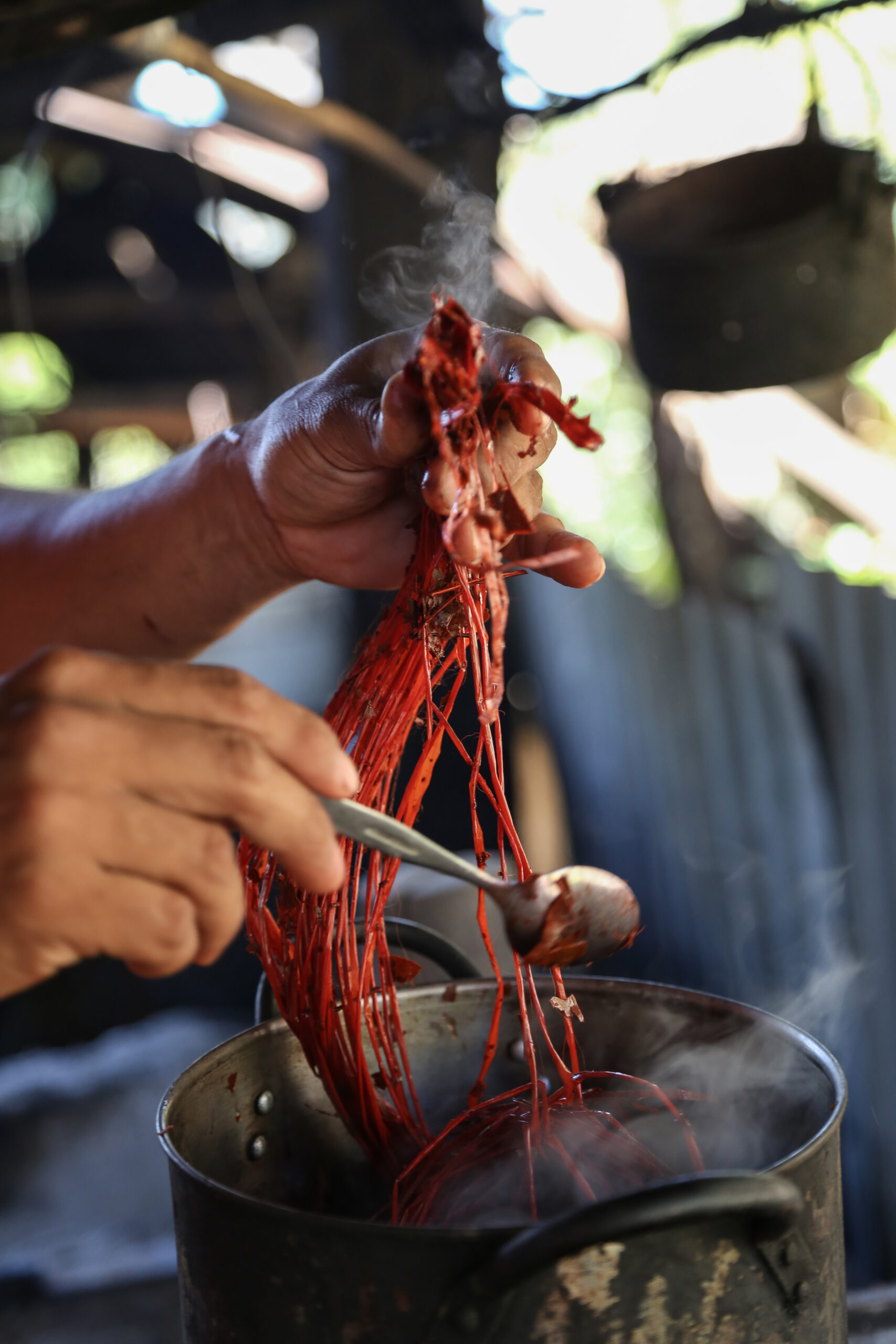Description
El sombrero pintao se confecciona de manera tradicional, con materiales obtenidos de cinco plantas, en la provincia de Coclé, Panamá.
Los cogollos tiernos de bellota (Carludovica palmata) se rasgan, se lavan, se cocinan y se secan al aire libre, para luego tejer las trenzas o crinejas. El grosor del rasgado y el número de fibras determinan las vueltas que tendrá el sombrero y si será de faena o para ocasiones especiales.
Las fibras del junco (Cyperus holoschoenus, de las Capiráceas) se obtienen con varios procesos de corte, apaleado, secado, “ahogado” y nuevo secado. Las hojas de la palma de chonta (Astrocaryum standleyanum) son más difíciles de obtener y rasgar pues es una palma espinosa. Ambas se rasgan y se cocinan con hojas de chisná (Arrabidaea chica) para teñirlas de un color rojizo. Después se sumergen por un día en lodo de ciénaga, para que adquieran el color negro. Para que el color negro quede más intenso se vuelven a hervir con hojas de chisná.
Las fibras blancas de la bellota se tejen en crinejas. La mayor parte del sombrero pintao es de crinejas de color natural. Las fibras del junco y de la chonta, ya teñidas de negro, son utilizadas para el tejido cruzado con las fibras de la bellota blanca para obtener los talcos y las pintas negras del sombrero.
Para darle forma al sombrero y coser las crinejas, talcos y pintas se emplea un fino hilo obtenido de la pita (Furcraea cabuya). Se unen en forma circular alrededor de una horma de madera, que le da forma a la copa del sombrero (en distintas medidas).
Esta artesanía es empleada en el trabajo, en las celebraciones y como parte de las indumentarias tradicionales. Sus técnicas fueron inscritas en la Lista de Patrimonio Cultural Inmaterial de la UNESCO en 2017.
english
Pintao Hat
The “pintao” hat is made in the traditional way, with materials obtained from five plants, in the province of Coclé in Panama. The tender buds of the acorn (Carludovica palmata) are torn, washed, cooked and dried in the open air, and then woven into braids or “crinejas”. The thickness of the tearing and the number of fibres determine the number of turns the hat will have and whether it will be a working hat or a hat for special occasions.
The fibres of the reed (Cyperus holoschoenus, of the Capyraceae) are obtained by various processes of cutting, beating, drying, “ahogado” (drowning) and re-drying. The leaves of the “chonta” palm (Astrocaryum standleyanum) are more difficult to obtain and tear as it is a thorny palm. Both are torn and cooked with “chisná” (Arrabidaea chica) leaves to dye them a reddish colour. They are then immersed for a day in bog mud to give them the black colour.
The white fibres of the acorn are woven into “crinejas”. Most of the “pintao” hat is made of natural-coloured “crinejas”. The fibres of the “junco” and the “chonta”, already dyed black, are used for the cross weaving with the fibres of the white acorn to obtain the talc and the black pints of the hat.
A fine thread obtained from the “pita” (Furcraea cabuya) is used to shape the hat and to sew the “crinejas”, “talcos” and “pintas”. They are joined in a circular shape around a wooden frame, which gives shape to the hat’s crown (in different sizes).
This craft is used at work, at celebrations and as part of traditional clothing. Its techniques were inscribed on the UNESCO Intangible Cultural Heritage List in 2017.


Reviews
There are no reviews yet.